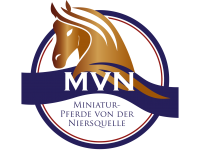The History
Miniature horses were developed from multiple sources. Many different pony breeds were bred for small size, including the Shetland pony and the Dartmoor pony. There may also have been an infusion of bloodlines from certain breeds of full-sized horses.
In the 17th century, miniature horses were bred as pets for Europe’s Habsburg nobility. Records from the court of the French King Louis XIV, circa 1650, note the presence of tiny horses among the exotic creatures in the king’s zoo. Paintings and articles featured the miniature horse by 1765. In England, Lady Estella Hope and her sisters carried on a breeding program from original English lines into the mid-nineteen hundreds. However, not all early miniatures were pampered pets of kings and queens. Some were used to work in the English Midlands, Wales and Northern European coal mines as pit ponies.
In the United States, the miniature horse breed was refined during the 20th century. Miniature horses in the USA added additional lines from sources that included the Hackney Pony and the Pony of the Americas.
The Falabella miniature horse was originally developed in Argentina in 1868 by Patrick Newell. When Newell died, the herd and breeding methods were passed to Newell’s son-in-law, Juan Falabella. Juan added additional bloodlines including the Welsh Pony, Shetland pony, and small Thoroughbreds. With considerable inbreeding he was able to gain consistently small size within the herd.
South Africa‘s Miniature Horses were developed in that nation and are known as the South African Miniature Horses, a recognized breed in its own right. Mr. Wynand de Wet of Lindley, South Africa, started in 1945 with two Shetland mares and a stallion. Through strict selection, their offspring became smaller and in 1991 Mr. de Wet bred a mare that was only 66 centimetres (26 in) tall.
General Information
Miniature horses are found in many nations, particularly in Europe and the Americas. The designation of miniature horse is determined by the height of the animal, which, depending on the particular breed registry involved, is usually less than 34–38 inches (86–97 cm) as measured at the last hairs of the mane, which are found at the withers. While miniature horses are the size of a very small pony, many retain horse characteristics and are considered “horses” by their respective registries. They have various colors and coat patterns.
Miniature horses are friendly and interact well with people. For this reason they are often kept as family pets, though they still retain natural horse behavior, including a natural fight or flight instinct, and must be treated like an equine, even if they primarily serve as a companion animal. They are also trained as service animals, akin to assistance dogs for people with disabilities.While miniature horses can be trained to work indoors, they are still real horses and are healthier when allowed to live outdoors (with proper shelter and room to run) when not working with humans.
They are generally quite hardy, often living longer on average than some full-sized horse breeds; the average life span of miniature horses is from 25 to 35 years.
Source: Wikipedia
